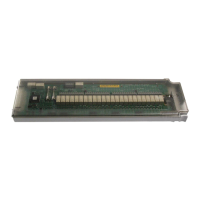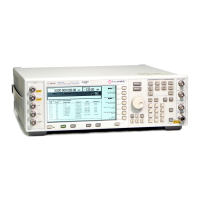74 Chapter 2
Programming Examples
LAN Programming Examples
The int main1() function will output a sequence of commands in a program format. If you want to run a
program using a sequence of commands then perform the following:
1. Rename the lanio.c int main1() to int main() and the original int main() to int main1().
2. In the main(), openSocket() function, change the “your hostname here” string to the hostname of
the signal generator you want to control.
3. Resave the lanio.c program
4. At the UNIX prompt type: cc -Aa -O -o lanio lanio.c
5. At the UNIX prompt type: ./lanio
The program will run and output a sequence of SCPI commands to the signal generator. The UNIX display
will show a display similar to the following:
unix machine: /users/mydir
$ ./lanio
ID: Agilent Technologies, E8254A, US00000001, C.01.00
Frequency: +2.5000000000000E+09
Power Level: -5.00000000E+000
Sockets on Windows
In Windows, the routines send() and recv() must be used, since fread() and fwrite() may not work on sockets.
The following steps outline the process for running the interactive program in the Microsoft Visual C++ 6.0
environment:
1. Rename the lanio.c to lanio.cpp and getopt.c to getopt.cpp and add them to the Source folder of the
Visual C++ project.
2. Select
Rebuild All from Build menu. Then select Execute Lanio.exe.
3. Click
Start, click Programs, then click Command Prompt.
4. At the command prompt, cd to the directory containing the lanio.cpp file and then to the Debug folder.
For example C:\SocketIO\Lanio\Debug
5. Type in lanio xxxxx “*IDN?” at the command prompt. For example:
C:\SocketIO\Lanio\Debug>lanio xxxxx “*IDN?” where the xxxxx is the hostname of your
signal generator. Use this format to output SCPI commands to the signal generator in a line by line
format from the command prompt.
6. Type exit at the command prompt to quit the program.
The int main1() function will output a sequence of commands in a program format. If you want to run a
